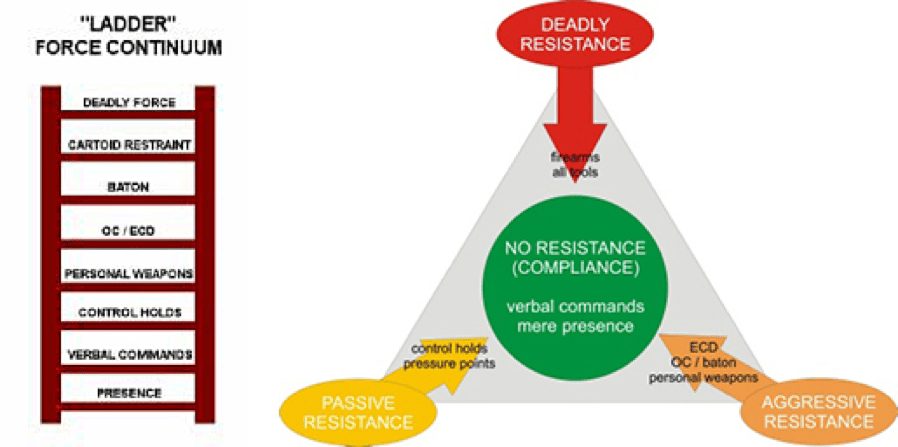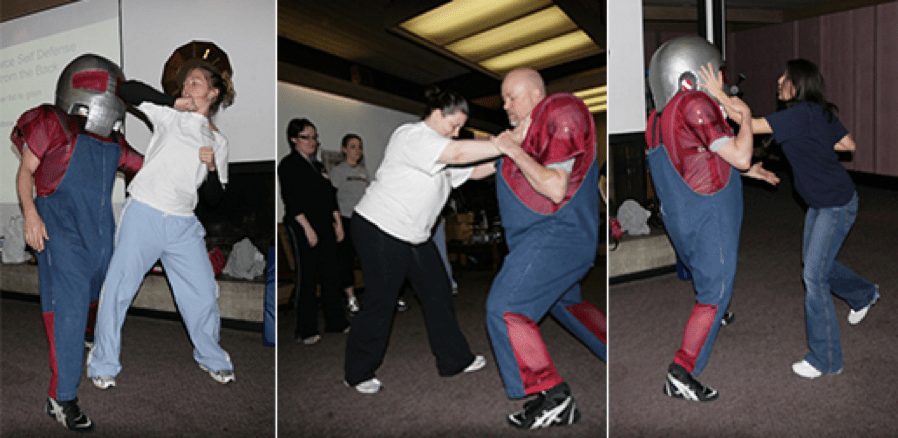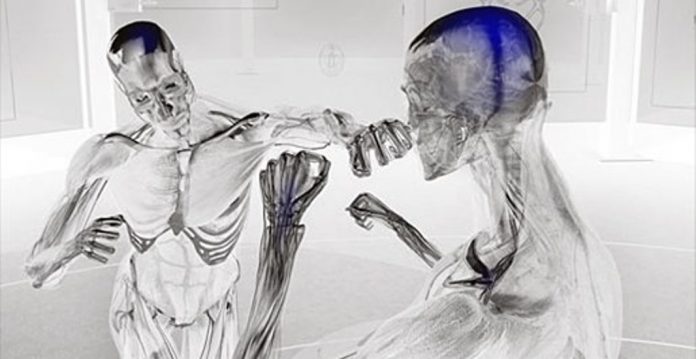The USAF Guide to Gaining Defensive Skills
The US Air Force conducted a study to determine the effectiveness of training their pilots. After an exhaustive study they concluded that it takes 3-5 real encounters for the training to kick in. Before that the pilots just couldn’t recall any of their training.
That’s why many bouncers, police, prison guards and military do much better with extreme violence – because they have gone through enough real life encounters for their training to kick in. Real experience rewires your brain.
Going out and looking for violence for experience sake is not the best way. However, simulations offer the next best alternative. You don’t need to be a trained fighter to be effective on the street. Many police and military personal do not have martial training. However if you do, all the better.
Implementing the Key Training Concepts in a 4-Step Process for Defense
Teaching: verbal instruction, theory, reading, these methods will not be readily accessible until later
Training: by route, using drills
Operant Conditioning: scenario training of the drills
Play: randori, sparring, being able to go full out in a safe manner. This is the reason in the early days of judo, they were able to beat all the jujitsu schools in contests. You need to add conflict rehearsals or scenario drills that are as close to the actual event you are practicing for.
Scenario Training for Reality-Based Defense
Scientists have long known that adding “situational simulations” have a far greater impact of success than non-situational training. Flight simulators are a perfect example, although pilots know that are conducting simulations, their brains react as if they are flying a real plane.
Reality-based scenarios try to replicate the “real situation” as close as possible, preparing staged environments, using weapons, eliciting the adrenaline response, and using faux blood etc. To the uninformed, this may seem superfluous, but a few days of this type of training yields more beneficial results.
It’s simple, when you are suddenly attacked, your conscious brain shuts down, your primitive brain (the amygdala) takes over and engages the “fight or flight” response. If you have trained in “real event” simulations, your chance of survival is greatly enhanced.
Continuum of Force: Realty-Defense for the Courtroom
Another feature of a good reality-defense program is knowing how navigate through the legal system. Even if you win in a street fight, you may have to face a greater challenge in the courts.
The force continuum is a police term that serves as a guideline on how much force you is appropriate for a given engagement. If a stranger punches you and knocks you down there is no justification in stabbing or shooting him, doing so will land you in prison. In other words, you should use the amount of force that can be justified in a court of law.
Getting Past the Freeze – Fight, Freeze or Flight
In general terms, this is a reflex that causes people to respond in varied interpretations of the fight, fly or freeze options. Adrenaline stress training is a great method of dealing with the “freeze” or the startle response (also called the Moro or panic response).
This is a system of training that teaches students how to set verbal and physical boundaries. The goal is to deescalate potential aggression by using verbal skills and body language. If this fails, and you need to fight, these programs will teach you how to handle the conflict stage.
This is a complicated subject and more detailed report about this type of training will be presented in the future.
Utilizing the Pareto Optimality (or the 80/20 Rule)
Referring to self-defense training, this means that you focus on the 20% of training that matters the most. In this manner you will be able to yield 80% of the benefit. In other words, you don’t need to practice everyday, twice a week of focused training will provide 80% of the benefit that 6 days a week will provide. Another example would be to divide the training into drills – slow, medium, fast, and then with full power and protective gear.
Training with Weapons Should Come First
It is completely irresponsible not to include weapons training in any defensive tactics course. More importantly, weapons defense should come before anything else. Getting punched or knocked it is not lethal, but a knife attack can be.
In addition, you should always carry some sort of weapon with you at all times. It can be a firearm, a knife, a stick, OC spray, or any improvised weapon. But first make sure it’s legal in your area. If you have access to a gun range consistent practice with both handguns and long guns are vital.







